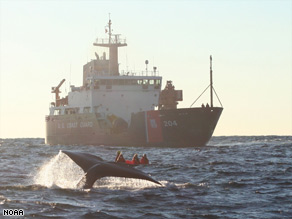
With black bear management regulations beginning in 1982, both population and range size have been increasing in recent years. Currently there are 25,000-30,000 black bears in 52,000 square miles in California.
Before my breakfast on Saturday morning, there was a
sign posted in my campus residence complex (just North of IV) warning that a bear was spotted that morning very close by! I am not sure whether Fish and Game ever found it and what they did if they did find it.
Please post something on the blog, if you heard anything!
"The primary goal of the Department's black bear management program is to maintain a viable and healthy black bear population." Will they maintain this population size even if bears begin to encroach upon areas of human settlement?
for more information on CA Dept of Fish and Game Black Bear Management see their
website


 I stand corrected... While I presented yesterday that the IPCC did include much on the effects of climate change on oceans, it was not enough in fact! Just today this paper was released in Science and the very first sentence reads: "The recent IPCC (Intergovernmental Panel on Climate Change) Fourth Assessment Report (2007) noted 28,586 significant biological changes in terrestrial systems but only 85 from marine and freshwater systems. Of these few observations from aquatic systems, 99% were consistent with global warming, which suggests that aquatic systems may be extremely vulnerable to climate change."
I stand corrected... While I presented yesterday that the IPCC did include much on the effects of climate change on oceans, it was not enough in fact! Just today this paper was released in Science and the very first sentence reads: "The recent IPCC (Intergovernmental Panel on Climate Change) Fourth Assessment Report (2007) noted 28,586 significant biological changes in terrestrial systems but only 85 from marine and freshwater systems. Of these few observations from aquatic systems, 99% were consistent with global warming, which suggests that aquatic systems may be extremely vulnerable to climate change."



